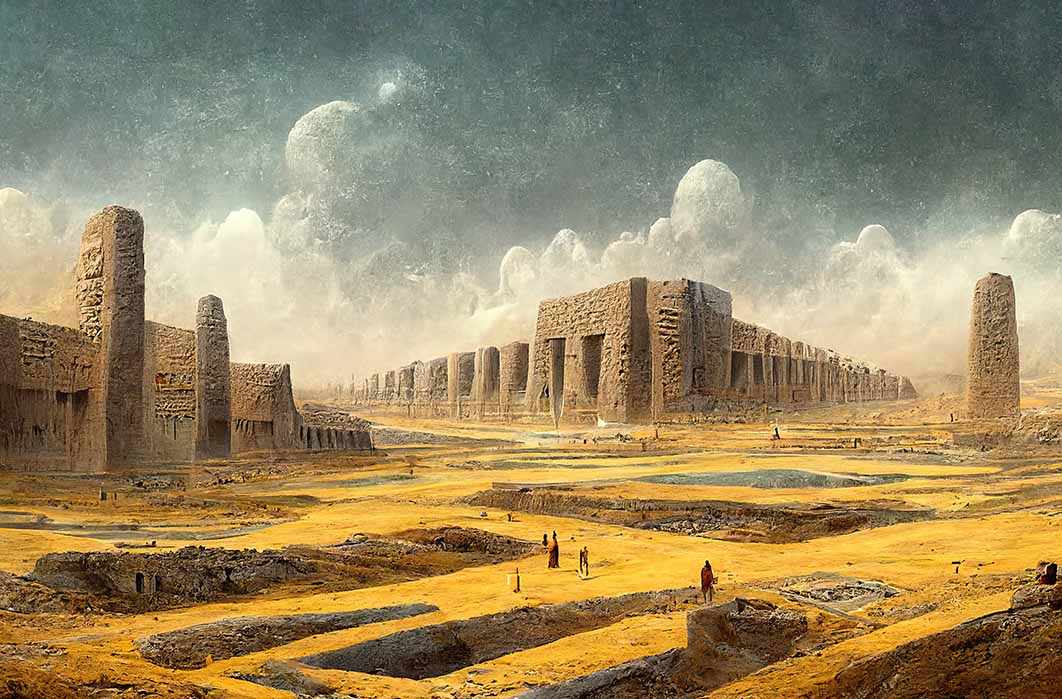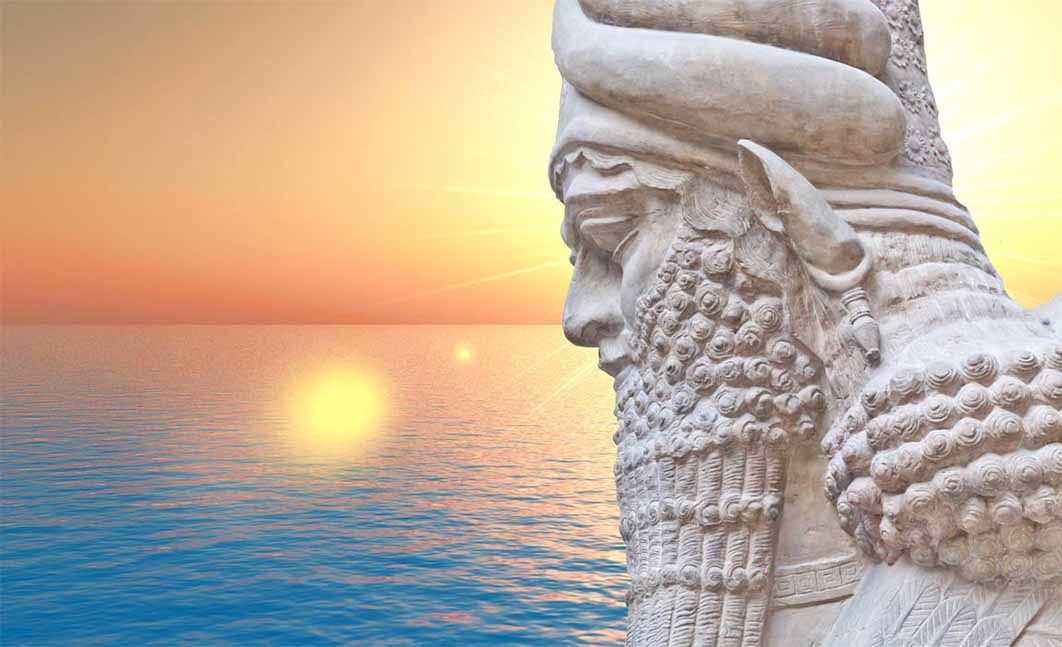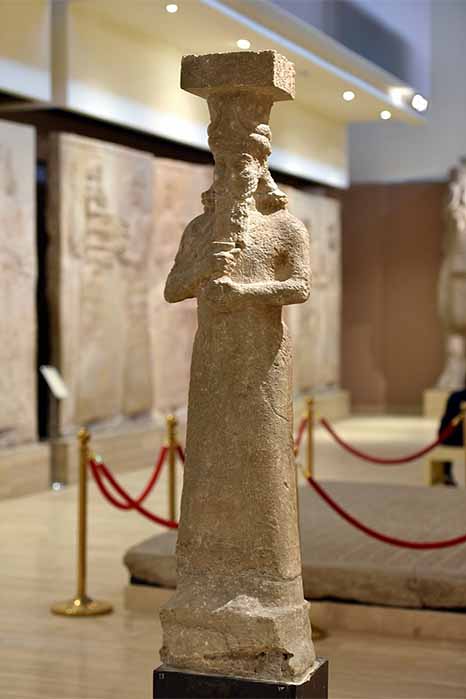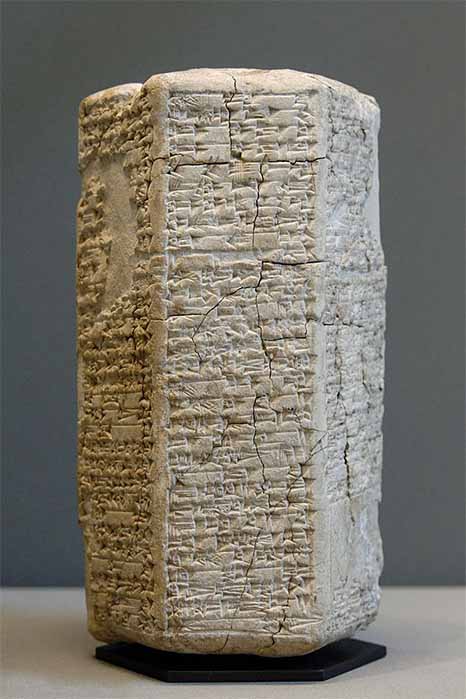
Eridu and Ubaid: Temples of the God Enki and His Consort Ninhursag
Ancient Sumerian mythology tells that Eridu, considered one of the most southern of the settlements close to the Persian Gulf, was inhabited before the flood when, according to the Sumerian King list: “When kingship from heaven was lowered, the kingship was in Eridu, In Eridug, Alulim became king; he ruled for 28,800 years. Alaljar ruled for 3,6000 years,” but modern archaeology traces it back to what is called the Ubaid Period, 5400 BC. Eridu was regarded as a place of great religious significance, since it was the dwelling of Enki, one of the trinity of Sumerian gods, his father being the supreme god An and his brother being Enlil.

A bearded Enki gazing over the water ( Paolo Gallo /Adobe Stock )( la source de l'info /Adobe Stock)
According to Julian Reade (1991) Enki’s original abode was a meagre mud brick hut, built during the Early Ubaid Period, which eventually developed into the magnificent temple called House of the Aquifer. It was believed Enki rose from Abzu, a primeval deity of a subterranean fresh water source, and thus Enki was considered the god of water. He had fertilizing powers as lord of the waters, but also the fertilizing power of semen. Enki is the Sumerian counterpart of the Akkadian god Ea, god of deep waters, wisdom and magic.

God Ea, a statue from Khorsabad, (late eighth century BC) Iraq, now in the Iraq Museum (Osama Shukir Muhammed Amin/ CC BY-SA 4.0)
The Tale of Enki and Ninhursag
In the Sumerian epic Enki and Ninhursag, Enki, as lord of Ab or fresh water (also the Sumerian word for semen), is living with his consort in the paradise of Dilmun (where the fresh waters of the aquifer mingle with the salt waters of the Persian Gulf), but there is no water in this paradise. Enki instructs Utu, the sun god (tutelary god of Larsa) to bring fresh water: “Dilmun Drinks the Water of Abundance, Her wells of bitter water, behold they are become wells of good water, Her fields and farms produced crops and grain, Her city, behold it has become the house of the banks and quays of the land.”

Sumerian Cuneiform Cylinder similar to the "Barton Cylinder" (Marie-Lan Nguyen/ Public Domain)
The Barton Cylinder, discovered in Nippur in 1889 and translated by George Barton, used an analogy of the fertility rite of Enki impregnating his consort and her female descendants, to describe the water suscitating the land, the crops and greenery. Enki fertilizes Ninhursag, who leaves him and gives birth to Ninsar (Lady Greenery). Enki does not recognize his daughter and fertilizes her as well. She gives birth to Ninkurra (Lady Fruitfulness or Lady Pasture) who leaves Enki, who in turn again fertilizes his granddaughter Ninkurra. Ninkurra gives birth to Uttu the spider, the weaver of the web of life. Uttu consults Ninhursag, Enki’s consort, who advises her to avoid riverbanks and places that Enki can flood – or fertilize. Ninhursag takes the semen from Uttu’s womb and plants it in the earth, from where plants grown. Thus, the essence of the tale is the land was fertilized by water, green plants flourished and there is a warning to avoid places prone to flooding. Enki ate the eight first plants and became very ill, but Ninhursag cured him.




